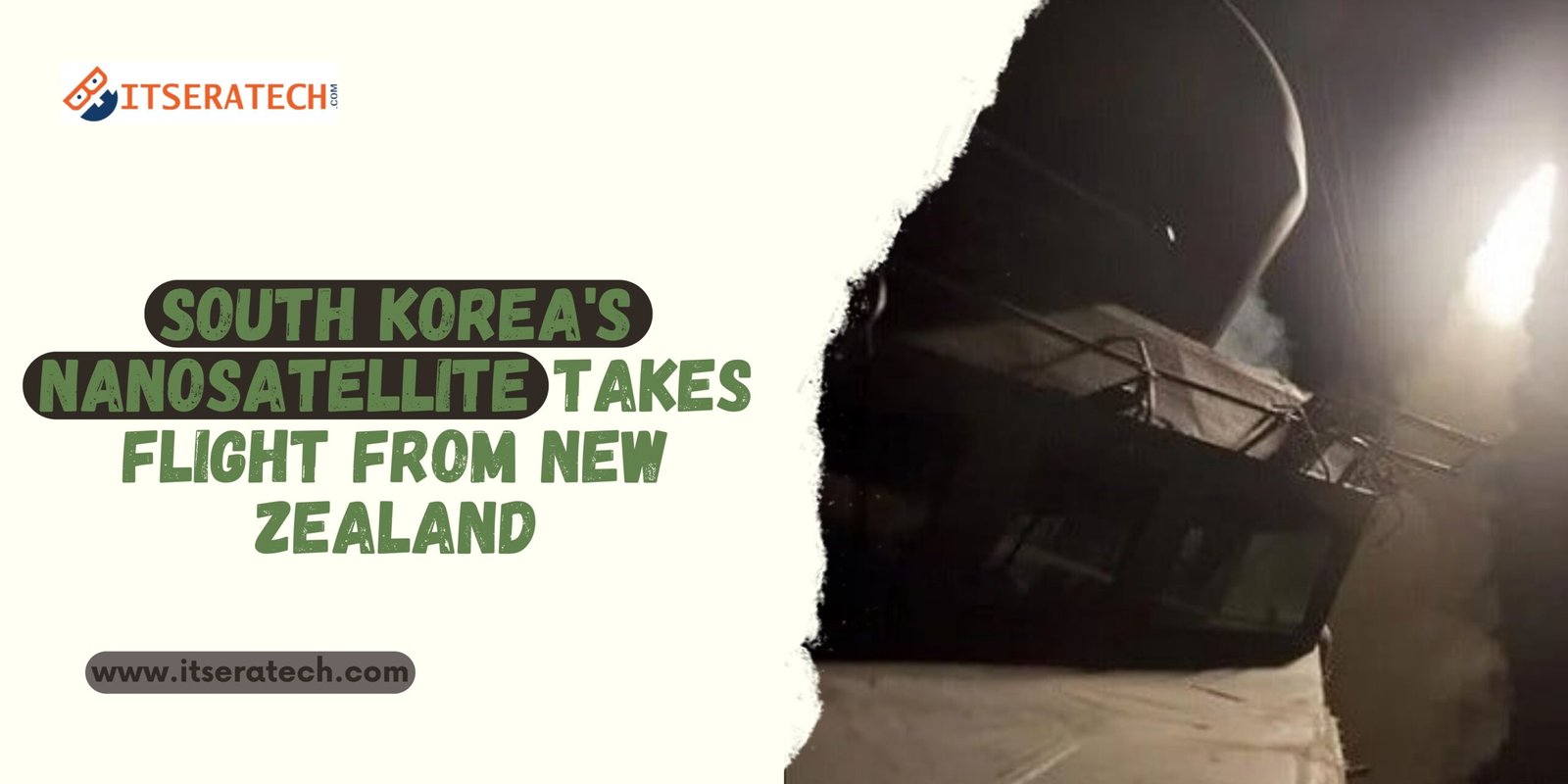On July 5th, 2021, South Korea effectively launched its to begin with ever nanosatellite from New Zealand’s Mahia Peninsula. The 3U CubeSat, named NARO-1, was created by the Korea Aerospace Research Institute (KARI) and is portion of a bigger satellite constellation project. This turning point dispatch marks a critical step for South Korea in its space investigation endeavors additionally highlights. The developing association between South Korea and New Zealand within the space industry. Let’s take a closer see at the centrality of this nanosatellite launch and what it implies for both South Korea and New Zealand.
A Leap Into Space From New Zealand
The dispatch of the nanosatellite from New Zealand’s Mahia Peninsula speaks to a surprising accomplishment for South Korea within the field of aerospace technology. Utilizing the progressed rocket technology available at the Mahia launch location. South Korea’s nanosatellite attack into space with NARO-1 underscores the nation’s commitment to expanding its nearness within the last wilderness. This event not as it were implies a essential moment for South Korean space investigation but moreover cements New Zealand’s status as a key player within the worldwide space launch market.
By choosing New Zealand as the dispatch location. South Korea leverages the vital geographical position and technological prowess of New Zealand. Upgrading the reciprocal participation in space technology and inquire about between the two nations. The successful deployment of the nanosatellite opens up unused avenues for South Korea in satellite technology and gives important information that will contribute to different logical and innovative headways. This collaborative effort between South Korea and New Zealand embodies the importance of international partnerships in pushing the boundaries of space investigation and utilization.
Understanding Nanosatellites
Nanosatellites, often abbreviated as “nanosats,” are scaled down satellites weighing between 1 to 10 kilograms. Their little measure and decreased weight make them a cost-effective choice for space investigation and inquire about. This development permits nations like South Korea to take part more effectively in space endeavors without the strong cost tag customarily related with satellite launches. The launch of NARO-1 from New Zealand represents a critical step forward in utilizing these compact yet powerful tools for logical and mechanical advancements. Through collaboration with New Zealand. South Korea is able to use the special capabilities of nanosatellites to encourage its space aspirations, demonstrating the potential of these small spacecraft in worldwide space investigation.
Objectives And Expected Outcomes
The essential objective of South Korea’s nanosatellite, NARO-1, launched from New Zealand, is to test and approve modern satellite technologies. Including communication frameworks and Soil perception capabilities. By achieving this, South Korea points to upgrade its capacity to screen natural changes, oversee natural disasters, and improve national security. The expected outcomes incorporate the advancement of more productive and cost-effective satellite solutions, expanded mechanical ability in aviation building. And a more grounded universal nearness in space investigation. This venture into nanosatellite technology demonstrates South Korea’s commitment to advancing its space capabilities while fostering collaboration with New Zealand.
Overview Of South Korea’s Space Ambitions
South Korea’s space ambitions extend beyond the successful dispatch of the nanosatellite, NARO-1, from New Zealand. This endeavor is part of a broader technique to set up South Korea as a noteworthy player within the worldwide space industry. By investing in nanosatellite innovation and worldwide collaborations. South Korea points to upgrade its disciple advancement capabilities, grow its space investigate. And contribute to worldwide space science. The dispatch from New Zealand represents a key point of reference in South Korea’s interest of these aspirations. Displaying its devotion to getting to be a pioneer in space investigation and innovation.
Opportunities And Challenges About Global Nanosatellite Market
The worldwide nanosatellite market presents a plenty of openings for nations like South Korea and New Zealand. Situating them as key players in a quickly developing industry. For South Korea, the successful dispatch of its nanosatellite from New Zealand not as it were underscores its innovative ability but too opens doors to expanded cooperation within the universal space community. This wander into the nanosatellite field offers South Korea the chance to capitalize on the lower fetched of adherent sending. Making space more available and empowering the improvement of innovative satellite applications.
However, the way forward isn’t without its challenges. The burgeoning interest in nanosatellites leads to an increasingly crowded low Earth orbit (LEO), raising concerns around space flotsam and jetsam and the require for compelling space activity administration. Also, the competitive nature of the worldwide nanosatellite advertise requires progressing advancements in innovation and cost reduction strategies to maintain an edge.
For New Zealand, its role as a launch site enhances its reputation in the space sector. Yet it also requires the country to navigate the complexities of international space regulations and the logistical challenges of supporting an expanding launch schedule. The collaboration between South Korea and New Zealand exemplifies how joint efforts can mitigate these challenges. Leveraging shared expertise to foster growth and innovation in the nanosatellite market.
The Future Of Nanosatellites And International Collaboration
The advancement of nanosatellite innovation guarantees to usher in a modern period of space investigation and universal collaboration. As nations like South Korea proceed to development their capabilities. Organizations with countries such as New Zealand will become increasingly imperative. These collaborations not as it were fuel technological innovation. But too offer a stage for shared learning and development within the global space community. The long run of nanosatellites pivots on these universal associations, with South Korea and New Zealand balanced to play urgent parts in forming the direction of space investigation and utilization for a long time to come.



